IB Biology Year 1 - Earliest & More Complex Cells and Ultrastructure of Cells
1/30
There's no tags or description
Looks like no tags are added yet.
Name | Mastery | Learn | Test | Matching | Spaced |
|---|
No study sessions yet.
31 Terms

What function is performed by the part of the cell shown in the electron micrograph?
Synthesis of proteins (It’s a picture of the rough endoplasmic reticulum (RER) which is primarily responsible for making proteins)
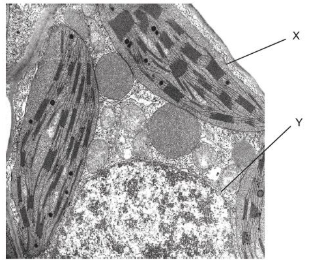
The electron micrograph shows a section through a cell. What is X and Y?
X = chloroplast
Y = nucleus
Stargardt’s disease, a genetic disorder that causes vision loss, is being treated using retinal cells derived from human embryonic stem cells. Why are embryonic stem cells used?
They are able to differentiate into the required cell type.

The image shows an electron micrograph of a cell.
Match the structures to the correct labels.

Distinguish between a prokaryote and a eukaryote.
DNA shape?
Ribosome size?
Membrane bound organelles?
Cell membrane?
Cytoplasm?
Genetic material?
Living?
Binary fission or mitosis?
technically some eukaryotes can do binary fission. ask York!

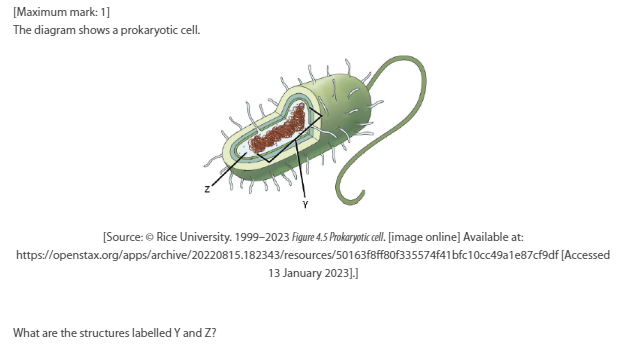
Nucleoid, 70s Ribosome
Nucleus v.s. Nucleiod
The nucleus is a membrane-bound organelle in eukaryotic cells that contains the genetic material (DNA)
The nucleoid is a non-membrane-bound region in prokaryotic cells where the genetic material is located.
Which cell component arose first during the formation of the earliest cells?
Plasma Membrane

No microorganisms grew in flask F but many grew in flask G

Different genes are expressed in each cell type
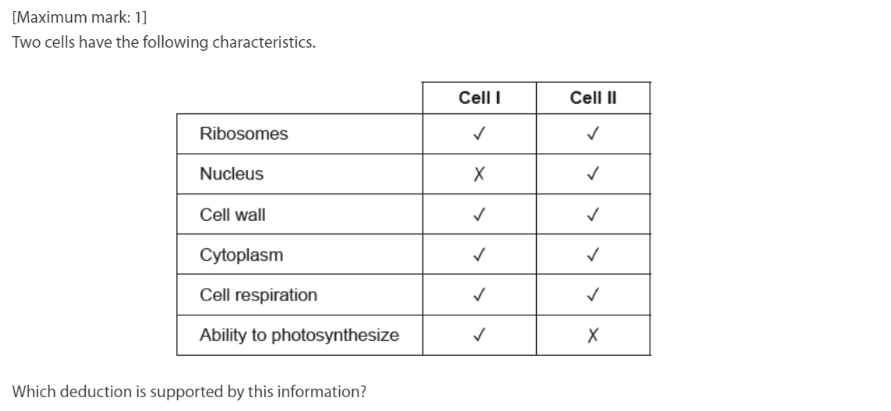
Cell I is prokaryotic.
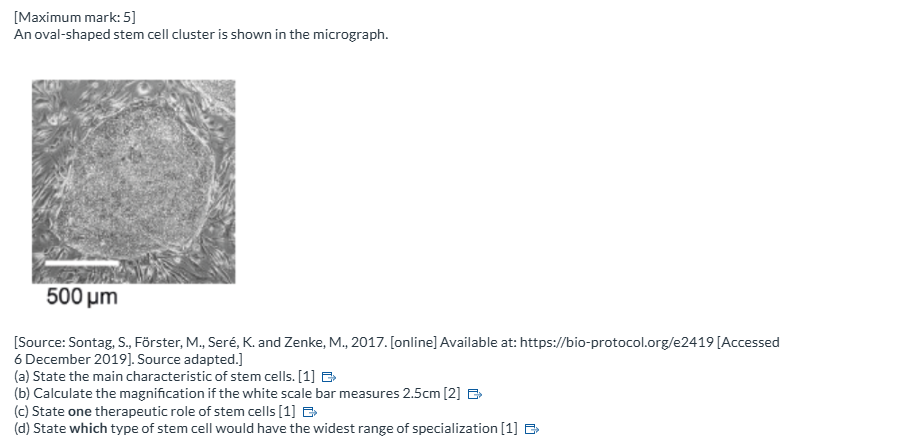
a) The main characteristic of stem cells is that they can mature and shift into different cell types; the type of stem cell that it is (totipotent, pluripotent, multipotent) dictates how much freedom they have in doing so.
b) The magnification is x50.
c) A therapeutic role of stem cells is that when and organism lacks a certain type of cell, the stem cell will mature into the cell type that the organism needs.
d) The stem cell with the widest range of specialization is totipotent cells.
What do chloroplasts and mitochondria have in common?
Both are found in the cells of mosses
Which statement is evidence for the endosymbiotic theory?
Chloroplasts contain 70S ribosomes.
Which sequence has the cells arranged according to their ability to differentiate, starting from the least able?
neuron, bone marrow, umbilical, embryonic
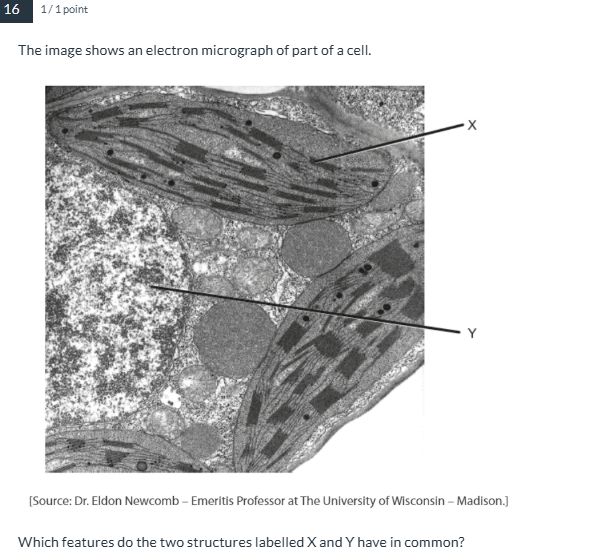
They are surrounded by a double membrane
If cells of a multicellular organism have the same genes, how can there be many different cell types in a body?
Some genes but not others are expressed in each cell type.

I. plasma membrane, II. mitochondria
What feature of both striated muscle and aseptate fungal hyphae is different from typical cell structure?
They have multiple nuclei within a structural unit
Which organelle is involved in generating vesicles destined for the cell membrane?
Golgi apparatus
so why is it not the ER? b/c the ER synthesizes proteins and lipids, while the Golgi modifies, sorts, and packages these molecules for distribution throughout the cell or secretion outside the cell.

a) In general, you will find obligate anaerobes at the bottom (the brown/green region), facultative anaerobes at the middle (the purple regions), and obligate aerobes at the top of the bottle (the yellow region).
b) We would find obligate anaerobes at the bottom as that is an environment that lacks oxygen, due to being compact and having no room for air. In addition, oxygen would insufficiently travel down that many layers. In the middle, facultative anaerobes are there because they can thrive with or without oxygen. Thus, here, they will receive come oxygen but still have limited access to it, which doesn't heavily impact them. Finally, obligate aerobes reside on the top of the pile because they need oxygen to survive, and the space with the least amount of material sitting on top of it will provide that to them.
c) Environments with high levels of nitrogen and hydrogen, such as swamps, which also lack oxygen as it decreases the amount of oxygen diffusing in would be optimal for methane production as it facilitates an environment for certain obligate anaerobes, that produce methane.
Outline, briefly, the two models that each propose an explanation for the movement of proteins through the golgi apparatus [2]
Two Theories of Golgi Apparatus
Cisternal maturation
This model proposes that individual cisternae within the Golgi apparatus are dynamic structures that move through the Golgi stack as they mature.
As a new cisterna is formed, it progresses from the cis-Golgi network to the trans-Golgi network, undergoing changes in composition as it matures.
Retrograde transport of Golgi enzymes and other components occurs within vesicles that move from later to earlier cisternae.
This model suggests that the cisternae are not static but are continuously being replaced and remodeled.
Vesicular transport model
This model proposes that each cisterna in the Golgi stack is relatively stable and maintains a consistent composition.
Proteins move between cisternae via small vesicles that bud from one cisterna and fuse with the next.
Anterograde transport, where cargo moves from earlier to later cisternae, occurs within these vesicles.
This model suggests that the Golgi apparatus acts as a "factory," where proteins are processed and modified in each cisterna, and then transported to their final destinations.
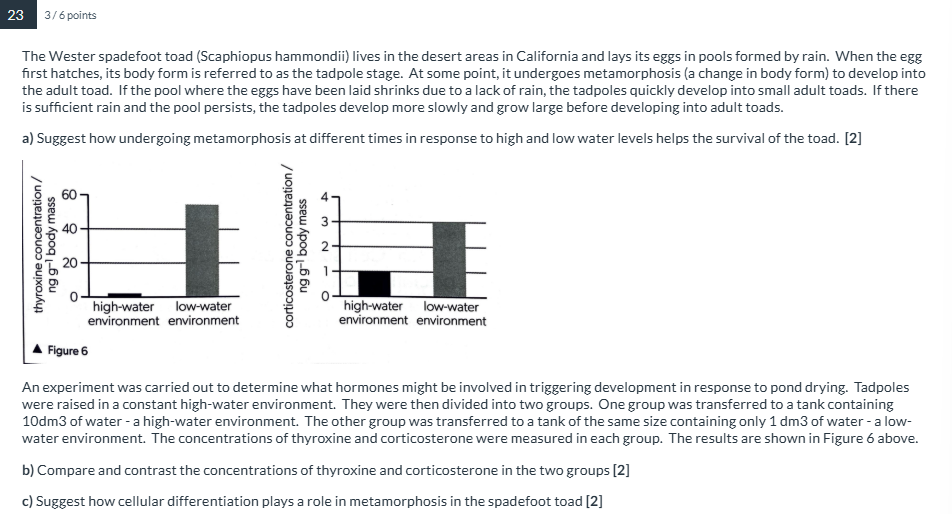
a) For low-water environments, tadpoles develop into an adult frog at a quicker pace, as the water is an unreliable habitat for them, forcing their body to secrete higher levels of hormones so that they are able to get out the water as quick as possible. Thus, by maturing faster, these frogs in low-water environments have a chance to reproduce in an unfavorable environment. However, this results in adults that are underdeveloped and smaller. For those that live in high-water environments, their bodies do not need to secrete nearly as many hormones as their environment provides all of their needs. Thus, they will develop into adult frogs at a slower, more healthier pace; the environment is not forcing them to struggle.
b) In both charts, tadpoles in the low-water environment had higher levels of thyroxine or corticosterone. However, this divide is much more apparent with thyroxine, with the low-water tadpoles having 60 ng g⁻¹ compared to the high-water having around 2 for thyroxine, while corticosterone was only 3 ng g⁻¹ for low-water and 1 ng g⁻¹ for high water.
c) Epigenetics are playing a role as the DNA between the tadpoles in low and high water environment is most likely very similar. However, their environmental conditions are influencing hormone levels, and the production (or lack of) is leading to certain cells differentiating in response.
Categorize characteristics as either prokaryotic or eukaryotic.

Which organelle would function in processing and packing proteins?
(Golgi apparatus)
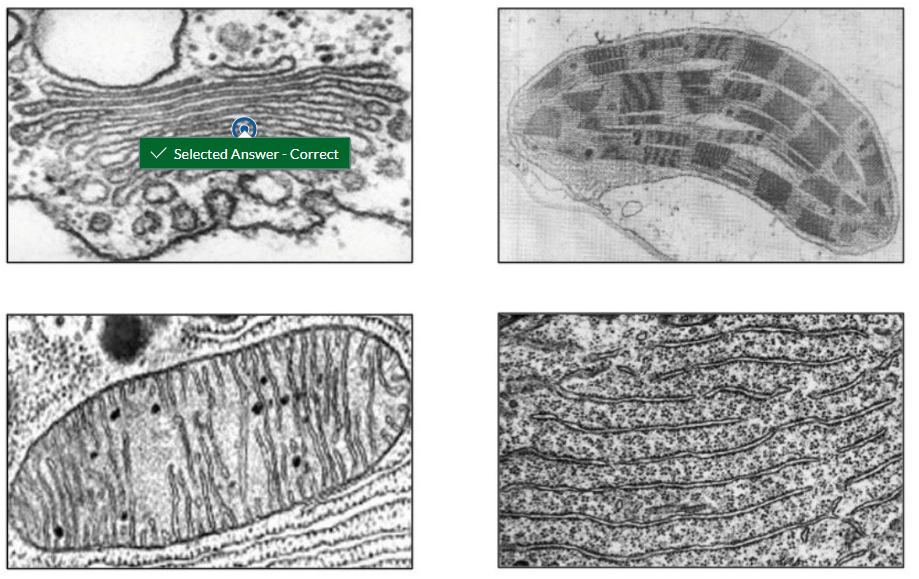
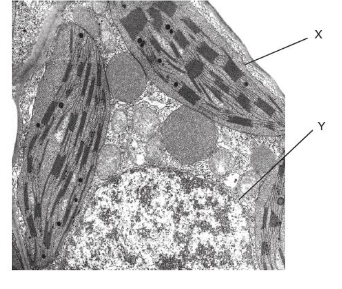
The electron micrograph shows a section through a cell. What is the name of the cell component labelled X?
Chloroplast
Click on the organelle that would function in performing photosynthesis.
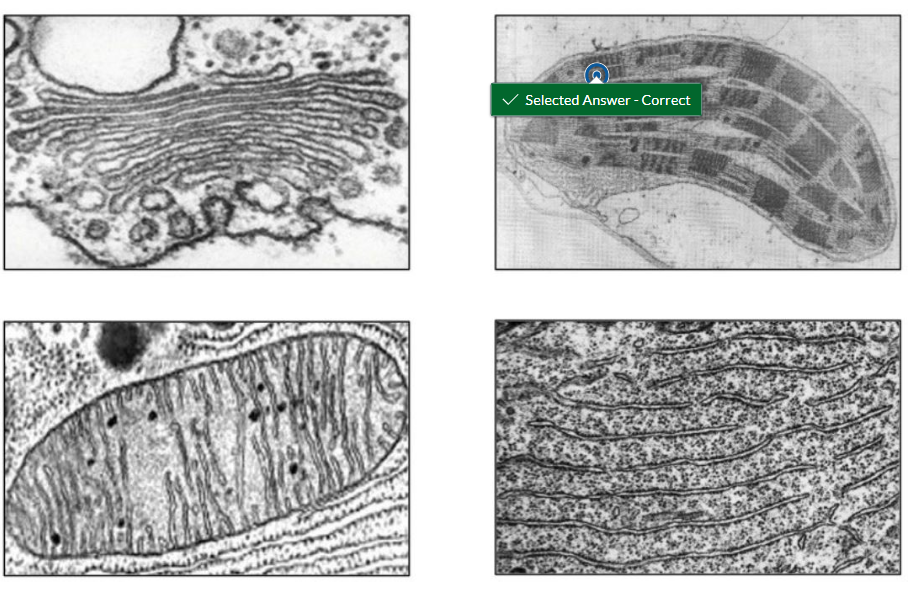
Which type of ribosomes are found in human cells?
The 80s ribosome is found in human cells (the unit "s" meaning Svedburg units, used to measure the rate at which particles sink during centrifugation) because humans are eukaryotic organisms, that is, humans contain cells with nuclei and they are multicellular organisms. These ribosomes are bigger than prokaryotic cells' ribosomes, which are 70s.
How do both mitochondria and chloroplasts provide evidence for the endosymbiotic theory?
They have double membranes.
Click on the organelle that would function in performing cellular respiration and producing energy.

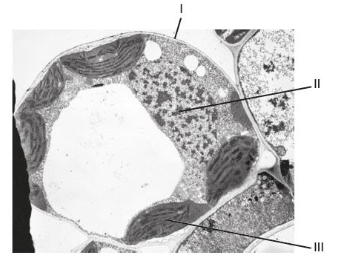
The electron micrograph shows a palisade mesophyll cell. State the name of the structures labelled I and II.

The absence of this structure would indicate that a cell is prokaryotic.
nucleus